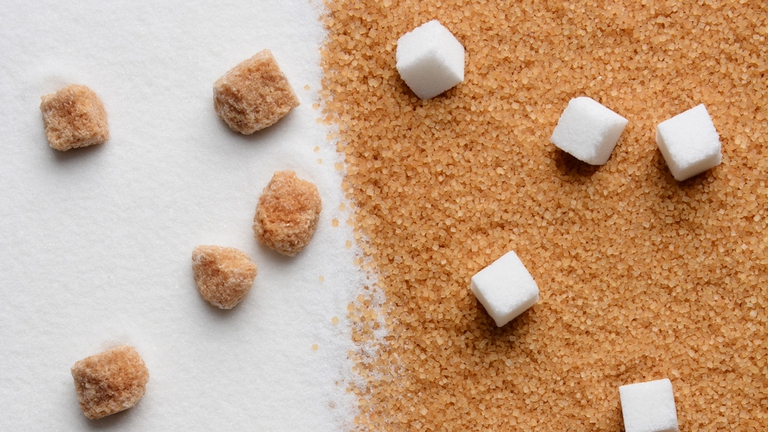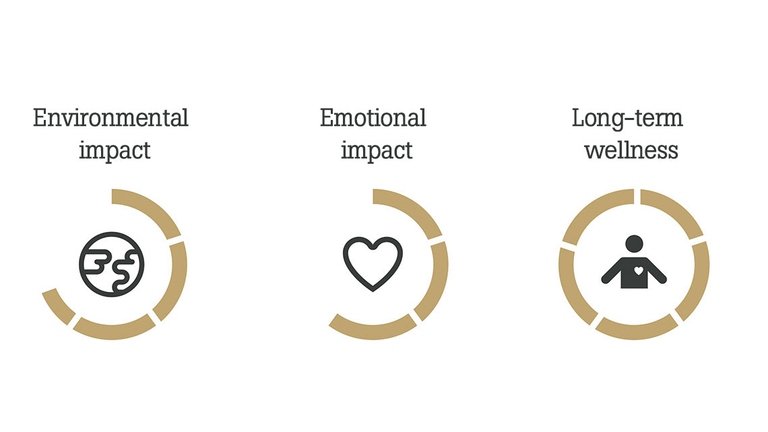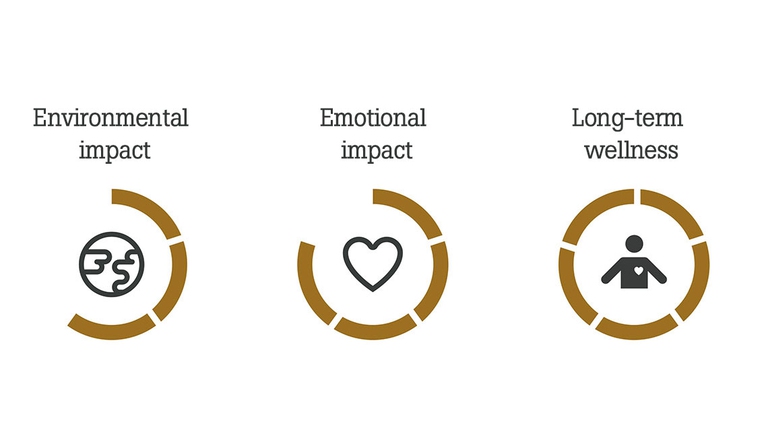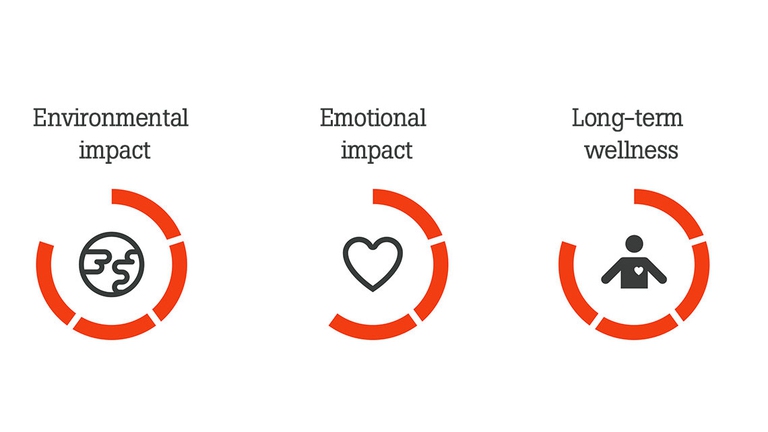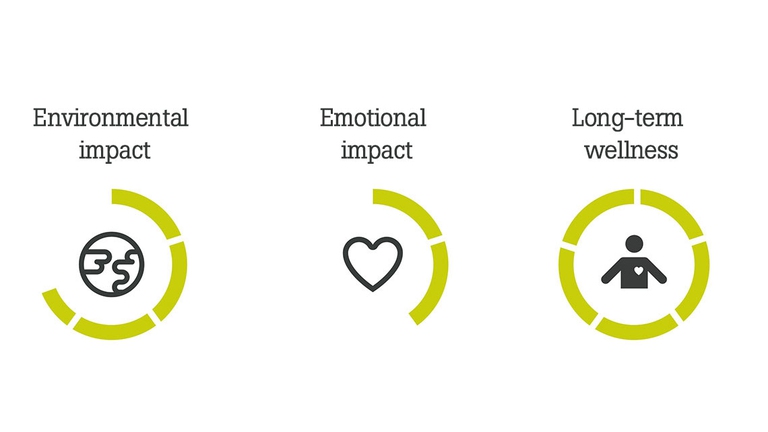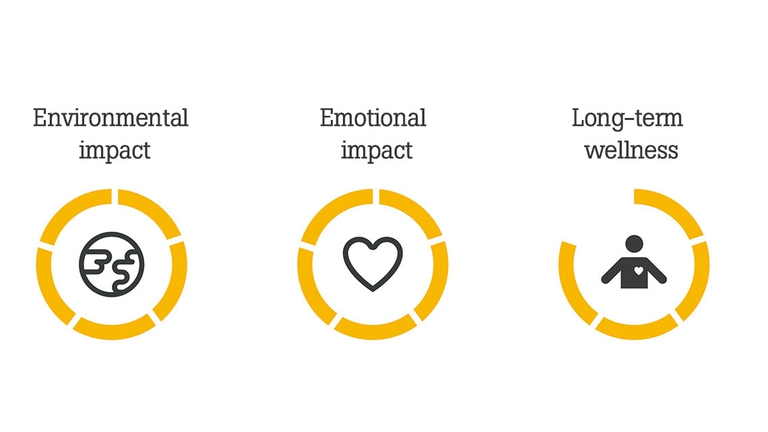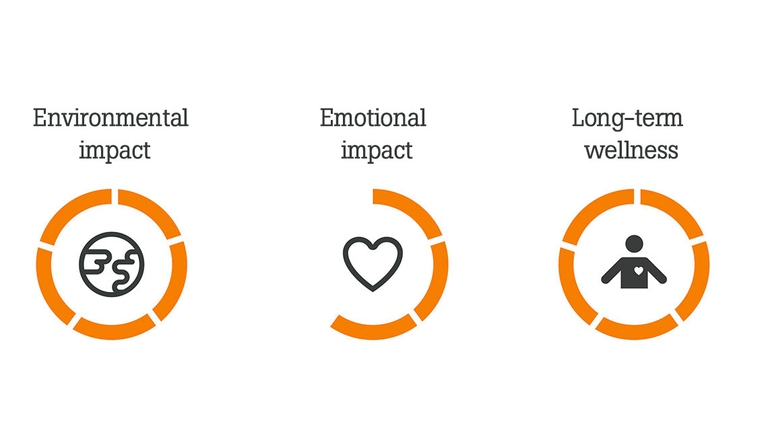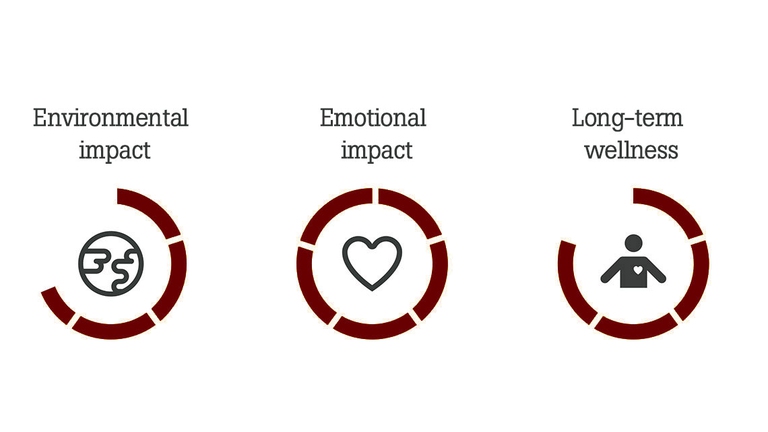
Kalongo Hospital in Uganda is on high alert. Medics are facing the pandemic amid an already precarious healthcare situation, in a country with only 55 intensive care beds.
Sharing a meal with friends has different effects on anxiety and mood from those produced by a quick meal eaten alone and almost without chewing. Sharing a meal increases the score of the nutri-emotional indicator in every food. Regardless of the specific score of a food item, the environment where one consumes it modifies its rating.
Sharing a meal with friends has different effects on anxiety and mood from those produced by a quick meal eaten alone and almost without chewing. Sharing a meal increases the score of the nutri-emotional indicator in every food. Regardless of the specific score of a food item, the environment where one consumes it modifies its rating.
Every food triggers more or less intense nerve responses and, in accordance to the signals it sends to the brain, relieves anxiety, stimulates the nerves or functions as an antidepressant.
Food sends signals to the “command centre”, it is life, a vital component in the relationship between human beings and the energy of the universe and it is not only made of simple bricks (calories, carbohydrates, minerals etc).
Food develops dynamic effects in every living being, producing the same difference that lies between a photograph and a film.
If we exclusively consider food constituents we only get a static, motionless photograph, the expression of a specific moment that doesn’t represent the relationship between food and living beings. If we observe the dynamic aspect of every living being’s relationship with food, as if we were watching a film, we will understand that a food item has other elements than the “nutritional facts” written in the label. These elements help understand the relationship between the energy of the sun and the living beings that have to turn it into their own source of energy. Food colours, for example, and the way food products are combined are some of the most underrated emotional aspects that help maintaining health.
We should consider the short-term and long-term effects of every food item. Sometimes, for example, a food product can suddenly increase blood sugar levels, which trigger quick brain responses. But if the stimulus caused by sweets is an end in itself and these types of food items aren’t combined with other nutrients, the stimulus could have a short-term effect that is followed after few minutes by the opposite effect.
A spoon of sugar provides those who eat it with 10 minutes of elation and then two hours of energy loss and mental confusion. If the same amount of organic whole brown sugar is used to prepare a sweet yet low-glycemic cake including also whole flour, walnuts, almonds, eggs and milk, it will stimulate our brain for 3-4 hours and improve our mood; this thanks to the combined action of the ingredients.
The nutri-emotional indicator indicates the short-term effects with a heart icon and the long-term effects with a person icon. The better reaction is triggered by the food item that more strongly stimulates both indicators.
Every food has a different score depending on its characteristics, which are listed below and have been precisely defined by scientific studies. Even though it isn’t still possible to define absolute values, science has taken its first steps to accept the theory of signals that considers food as part of the global nourishment of a living being and not as a series of identical bricks.
When people develop insulin resistance (a condition caused by excessive consumption of carbohydrates that are not balanced with the right amount of fibre and protein) their mood worsens, so this diet is a risk factor for depression (Timonen M et al, BMJ. 2005 Jan 1;330(7481):17-8. Epub 2004 Dec 16).
Whole flour should contain from 12% to 14% of proteins (depending on the cereal it is made of) and a significant amount of fibre. Opting for wholesome products in our daily diet can prevent us from excessively gaining weight and developing cardiovascular, metabolic and neurodegenerative diseases (including Parkinson’s and Alzheimer’s) that can be caused by hyperglycemia and hypoglycemia. Those who consume 28 gr of whole cereals every day (compared to 28 gr of refined flour or cereals) have a 5% lower mortality rate independent of the causes and 9% mortality rate for cardiovascular diseases (Wu H et al, JAMA Intern Med. 2015 Mar;175(3):373-84).
The right protein daily intake (at least 0.8 g of protein per kg of body weight) must be split equally across three meals in order to have an adequate hormonal response, which is fundamental to maintain muscle tone, activate the signals the brain receives, relieve anxiety and boost mood. An incorrect balance sends alarm signals to the body and interferes with the emotional sphere. This means that breakfast must also include foods rich in protein that cheer you up (Mamerow MM et al, J Nutr. 2014 Jun;144(6):876-80).
In the last few years, research revealed that sugar causes addiction, has negative effects on mood, increases anxiety and triggers inflammation. It’s not sugar in itself that determines these negative effects, but its sweet taste that is not balanced with other nutrients. And fructose has the same negative effects (Lakhan SE et al, Nutr J. 2013 Aug 8;12:114). On the contrary, cooking good and well-prepared sweets using different types of sugar is a fundamental part of our life because it satisfies our primordial needs. Using sugar alone or abusing it – as in soft drinks or useless sweetening – has a long-term devastating emotional impact on people.
The colour of many food items indicates how many polyphenols and other antioxidants they contain. Since research has revealed that natural antioxidants can tackle alarm signals generating emotional changes, blackberries, tomatoes and organic dark chocolate low in sugars have unexpectedly become a therapeutic remedy against inflammation (Xu Y et al, Curr Neuropharmacol. 2014 Mar; 12(2): 108–119).
This assessment refers to its use in the preparation of desserts including traditional cakes containing the minerals of organic brown sugar and other ingredients that help maintaining a stimulating effect in the long term.
In case it was used alone or as a sweetener it would have five ‘hearts’ but a lower score as regards long-term wellness.
Wholesome flour combines savouriness and taste maintaining a very low glycemic level. The feeling of satiety is a positive signal for the body both in short and long term.
Black rice is one of the ancestors of white rice. It is rich in fibre (10 times more fibres than refined rice) and protein (from 7 to 10% of its weight) and has some of the characteristics of whole wheat. Black rice has stimulating properties and in the past it was considered an aphrodisiac product. Today its aphrodisiac properties are considered the expression of its high content of phenols and other antioxidant substances that characterise its particular taste and its immediate effects on mood.
Its colour, the fact that it’s rich in antioxidants and its particular structure that is perceived in different forms (solid, liquid, drinkable, fleshy, dry) are one of the reasons why it is spread across the world. It is an excellent ingredient that can be prepared in a variety of ways. It contains enough fibre to maintain low glycemic levels, tickles the appetite and satisfies your mind in the short and long term.
Its short-term effects result from the immediate perception of its colour and aroma when, for example, we rub a drop of oil between our hands. Its long-term action is a result of its entrance in the cell membrane (even in the brain) where it acts as an anti-inflammatory substance and alters the alarm signals caused by an unhealthy diet. The long-term effects of extra virgin olive oil on emotions depend on their modulation of the relationship among cells. These properties should convince everybody to opt for it.
The assessment refers to honey included in the preparation of desserts such as cakes or biscuits or used with whole muesli, oily seeds and fruit. Since honey is rich in antioxidants and minerals it helps maintain the stimulating effect over time. If used as a sweetener or alone it scores just one point as regards long-term wellness and five as regards the immediate emotional effect.
A pleasant taste combined with 4% of fibre (so low glycemic levels) and a large amount of potassium (190 mg per 100 g of peach) that has an immediate stimulating effect. Low glycemic levels as well as antioxidants such as lutein and zeaxanthin that reduce oxidative stress and function as natural antidepressants have a long-term effect on emotional wellness.
We’re talking about organic dark chocolate low in sugars. It has antioxidant properties and contains theobromine and caffeine, that’s why it stimulates the nerves. Actually, coffee, cocoa and tea is traditionally used in many regions of the world because it is scientifically proven that theobromine and caffeine inhibit phosphodiesterase, a technical term explaining the substances’ anti-allergic action. Using these products helps naturally reduce inflammatory reactions caused by food, which have significantly increased in the past few years. It’s as if a common characteristic had promoted in different regions of the world the use of a beverage combining taste, pleasure, properties that alleviate inflammation and hypersensitivity reactions.
Cocoa also contains a number of substances including serotonin, anandamide and phenethylamine. These substances are very effective in enhancing mood, relieving stress and alleviating hunger (phenethylamine), but they also stimulate the senses causing euphoria and a subjective feeling of pleasure and elation with similar effects to psychoactive drugs including opium and cannabis.
A correct dose of dark chocolate immediately boosts mood and, thanks to its antioxidant substances and low glycemic levels, maintains our mood cheerful in the long term. As the ”American Journal of Epidemiology” reported, flavonoids in dark chocolate containing 75% of cocoa stimulate brain activity and brain’s processing speed. So, it’s not just exquisite and luscious, it’s also healthy. So why should one eat it at parties or in a moment of depression? As long as it contains 75% of cocoa it’s good to it eat, but don’t exaggerate. So it is advisable to consume a few squares a day to feel happy.
Siamo anche su WhatsApp. Segui il canale ufficiale LifeGate per restare aggiornata, aggiornato sulle ultime notizie e sulle nostre attività.
![]()
Quest'opera è distribuita con Licenza Creative Commons Attribuzione - Non commerciale - Non opere derivate 4.0 Internazionale.
Kalongo Hospital in Uganda is on high alert. Medics are facing the pandemic amid an already precarious healthcare situation, in a country with only 55 intensive care beds.
Indigenous peoples in the isolated region are suffering from poor access to health, with several cities becoming hotspots of coronavirus in the Amazon. Indigenous leaders, health experts and NGOs are calling for international help.
The government believes it’s on the right track to addressing the coronavirus in Bangladesh. But millions don’t have enough food and as most hospitals refuse patients with a fever and cough, the poor are dying.
The coronavirus in Africa could completely overwhelm healthcare systems neglected for years. Yet Zambia has refrained from imposing the type of far-reaching lockdown seen in nations such as South Africa.
The city of Guayaquil in Ecuador has become the coronavirus epicentre in Latin America, offering a dire warning of what could happen throughout the region. People are dying so fast that bodies are left in their homes, or in the streets, for days.
These days her phone hasn’t stopped ringing but Ilaria Capua continues sharing her knowledge to spread information about the novel coronavirus. In this interview she highlights the importance of sustainability.
The consequences of the novel coronavirus or Covid-19: what are the symptoms, what the death toll is, whether there’re a cure, how China has been affected. And why it’s been labelled an emergency also in economic terms.
Natural remedies can be very helpful when it comes to not feeling cold in winter: here are some ways to keep the body warm, at home and outdoors, including what to eat to increase body heat.
The kambo medicine uses the secretion of the green tree frog. We speak to Tanja Lucev, who organises kambo retreats in Guatemala, about the benefits of the traditional shamanic experience.
